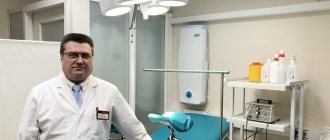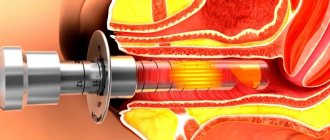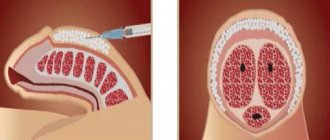Pale skin or cyanosis is a bluish discoloration of the skin and mucous membranes throughout the body or in fragments (sometimes in very limited areas of the skin, for example, only on the palms or fingers).
This phenomenon occurs due to a significant increase in the blood of the so-called reduced hemoglobin, or in other words, hemoglobin, which is not combined with oxygen.
Normally, the heart pumps blood into the lungs, where it is enriched with oxygen, and then goes back to the heart. It is then released to all organs and tissues, thereby reaching all parts of the body, supplying our organs and tissues with oxygen, and then returns with venous blood back to the heart, transporting carbon dioxide.
Cyanosis of the skin should be distinguished from the purple coloration of the face, which occurs with a disease such as erythremia or otherwise, a benign blood formation in which a large number of red blood cells appear in the blood. And also from cherry coloring of the skin, which occurs with carbon monoxide poisoning.
Cyanosis or pale skin coloring is divided into the following types:
- Central (throughout the body)
- Peripheral (in limited areas)
When does pallor occur throughout the body?
Central cyanosis or, in other words, pallor of all the skin of our body occurs when there is a violation of blood saturation in the lungs.
This happens in the following cases:
- Respiratory failure due to lung diseases
- Some blue-type heart defects, in which there is a pathological discharge of venous blood into the arterial bed due to defects in various walls of the heart, for example, with tetralogy of Fallot
- Exposure to various industrial poisons, such as aniline derivatives
- Taking certain medications (for example, sulfa drugs)
As a rule, the disappearance of the pathological factor, as well as the supply of oxygen, leads to a decrease in the severity of cyanosis.
How to improve your skin tone?
There are standard recommendations that will help remove unhealthy complexion:
- you need to undergo a medical examination to determine possible diseases that could provoke this problem;
- carry out treatment that should be prescribed by a doctor;
- lead the right lifestyle, it should be active;
- Get enough sleep. This should be at least 6 hours per day;
- eat the right food - more fresh foods, less pickled, fried, fatty flour, drink clean water and plenty of it;
- exercise;
- walk in the fresh air, ventilate the room;
- do not use a lot of contraceptives, antibiotics;
- avoid stressful situations;
- try quitting smoking and drinking less.
These are the main activities that will help improve your skin tone and help your skin heal.
When does pale skin occur in certain areas of the body?
Peripheral cyanosis or local pallor of the skin, for example, the tips of the nose, lips, fingertips, occurs due to slow passage of blood through the capillaries and increased utilization of oxygen by tissues, as a result of which the content of reduced hemoglobin increases and gives the blood a dark color (bluish coloration of the skin).
This phenomenon occurs in the following cases:
- Hypothermia (spasmodic skin arterioles)
- Local circulatory disorders (for example, the presence of blood clots in the vessels of the legs with thrombophlebitis or arterial thrombosis)
- Formation of stenotic plaques in the arteries (with atherosclerosis)
- Severe heart failure (one of the main reasons for the slowing of blood flow through the capillaries due to a decrease in cardiac output. This phenomenon occurs, for example, with a history of myocardial infarction, cardiomyopathies, etc.)
- Pulmonary embolism (PE). Cyanosis occurs, more often, in the upper half of the body, and is associated with the separation of a blood clot from the veins, most often of the lower extremities, with further entry into the pulmonary artery. This cyanosis is accompanied by a pronounced deterioration of the condition and, with significant blockage of the pulmonary artery, can lead to death.
- Heart defects, such as acquired mitral valve stenosis.
Normally, blood from the lungs enters the left atrium, then through the mitral valve into the left ventricle. With stenosis (narrowing) of this valve, a full amount of blood no longer enters the left ventricle and, like a subway during rush hour, blood begins to stagnate in the previous sections, in particular in the lungs. In such cases, a bluish discoloration of the skin is often accompanied by severe shortness of breath, swelling, wheezing in the lungs and even sometimes hemoptysis.
Also, cyanosis may be present “paroxysmally” in the form of paleness and blue discoloration, for example, of the fingers. This happens with Raynaud's syndrome. Let us recall that Raynaud's syndrome is characterized by local spasm of arterioles in the extremities. Manifests itself in the form of clearly defined pallor of the skin. This syndrome is observed in the following cases:
- Diffuse connective tissue diseases, especially scleroderma
- Diseases of peripheral vessels (for example, with atherosclerosis of the vessels of the extremities)
- Vibration disease
- Frostbite
- Chronic finger injury
- Endocrine disorders (thyroid, gonads)
- Taking various medications (for example, cytostatics)
- Genetic disposition
An attack of peripheral spasm of arterioles in the extremities can be associated with severe anxiety, smoking, coldness or fatigue of the fingers.
Externally, Raynaud's syndrome is manifested by numbness, pain, paleness of the fingers due to spasm of the arteries and a changing bluish coloration of the skin.
This cyanosis results from compensatory dilation of the capillaries and veins, followed by redness of the affected finger at the end of the attack. This redness is due to the dilation of arterioles and capillaries when blood flow is restored (for example, when the limb is warmed).
According to statistics, in approximately half of patients with these symptoms, the cause cannot be identified; in these cases, Raynaud's phenomenon is diagnosed. It develops more often in young people, more often in women.
Dull complexion
The health and appearance of the skin depend mainly on its level of moisture and the state of local blood circulation, and a dull complexion is a consequence of an unhealthy lifestyle. The condition of facial skin is negatively affected by lack of sleep, fasting or strict diets, physical inactivity, bad habits, and excessive tanning.
As a result of chronic lack of sleep, the skin does not have time to rest and recover normally overnight, resulting in pallor, deteriorating complexion, and the process of premature cell aging. Dietary restrictions lead to the skin not receiving enough essential nutrients, microelements and vitamins, which are the “building material” for new cells. Staying in one position for a long time (for example, sitting at a computer) leads to overstrain and spasm of the muscles of the cervical-collar region, resulting in impaired blood circulation in the neck and head. All this is immediately reflected in the appearance of the skin - the complexion becomes dull and lifeless.
Excessive use of tanning (prolonged sunbathing or frequent visits to the solarium) contributes to the violation of the hydro reserve, loss of elasticity and photoaging of the skin, causing the appearance of hyperpigmentation. Therefore, skin damaged by excess ultraviolet radiation looks dehydrated, dull and tired. The complexion changes due to improper skin care or lack thereof. Lack of fresh air, as well as poor environmental conditions, can also cause a dull complexion. It is not without reason that this cosmetic problem is considered relevant for residents of large cities suffocated by smog.
In winter, the condition of the skin is negatively affected by low outdoor temperatures, frosty winds, dry air in apartments and offices, lack of sunlight and vitamin deficiency. Therefore, by the beginning of spring, many women notice that the skin has lost its freshness and the complexion has become dull. Unhealthy complexion can be caused by the accumulation of dead cells and dust covering the skin - oily skin is most susceptible to contamination. In addition, with age, the regeneration of the epidermis slows down, keratinized cells exfoliate more slowly, which also leads to dullness of the epidermal layer.
The expression “smoker's face” has long come into everyday use. Premature wrinkles, grayish tint and dry skin, sunken cheeks, deep nasolabial folds - these are typical touches to the portrait of a person who cannot part with a cigarette. Toxic substances contained in tobacco smoke cause spasm of skin capillaries. In addition, when smoking, the amount of carbon monoxide in the blood sharply increases. This means that the skin of the face is poorly supplied with blood and enriched with nutrients and oxygen. Therefore, smoking inevitably leads to changes in the structure of the skin - increased dryness, sagging, uneven and dull complexion, and premature aging.
In some cases, a dull complexion may reflect poor overall health. Thus, dry and gray skin, brittle nails and hair loss are often signs of hypothyroidism. Changes in the condition and color of the skin are caused by gastrointestinal diseases (cholecystitis, pancreatitis, constipation, dysbacteriosis), osteochondrosis of the cervical spine, long-term use of medications, menopause, etc.
Attention to tests
Children rarely suffer from malignant tumors. They account for only 10% of all childhood diseases. Moreover, the majority of all cancers in children are hemoblastoses (blood tumors). One of the manifestations of the disease is a change in the cellular composition of the blood and anemia (decrease in the level of hemoglobin in the blood). Common symptoms of anemia include fatigue, weakness, lethargy and pale skin.
Of course, a decrease in hemoglobin levels is not always a sign of cancer in a child, but if there are problems in this area, you should be wary and conduct a more detailed examination with a doctor.
Procedures to improve skin color
How to improve complexion? In salons today, many procedures are carried out, and among them there are some that correct skin tone and eliminate its dullness. And many experts say that such procedures are distinguished by their effectiveness. There are certain limitations and indications for each technique. Therefore, you first need to study the cause of the skin color disorder, and then only think about treatment. Cosmetologists recommend performing the following procedures to improve skin tone:
- mesotherapy. Here the cells are filled with nutrients. Injections are made into problem areas and the drug is administered. As for the medicine, it depends on the disorder itself, its type;
- chemical peeling. This method of skin correction is considered very effective. Special preparations are applied externally, causing a chemical burn, which can vary in intensity. Even if the treatment is superficial, the result of the procedure will be different. The skin of the face will be smooth, elastic, toning, and will have an even tone. But this procedure needs to be done by professionals to avoid serious consequences;
- laser peeling. It already uses a laser that does the job accurately. It will help get rid of age spots, brown, dull complexion;
- face massage. This procedure is characterized by normal perception and safety. It allows you to improve skin tone, remove skin unevenness, regenerate tissue, stimulate blood circulation;
- other procedures. They also carry out plasma lifting, photorejuvenation, biorevitalization, etc.
Gray complexion can be removed using ultrasonic facial skin cleansing. It has proven its effectiveness. But it is worth remembering that all of the listed procedures should be performed exclusively by specialists.
Age-related changes
After a person reaches the age of 45-50 years, the likelihood of developing cancer increases. The longer a person lives, the more he comes into contact with carcinogenic factors. In addition, he already has chronic inflammatory diseases (where constant cell division and mutations occur), against which cancer often forms. Therefore, it is important to regularly undergo medical examinations and screenings offered at the clinic. This will allow us to identify precancer and early stages of cancer pathologies.
Screening is the most effective way to reduce mortality from major cancers among adults. For women, this is early detection of breast and cervical cancer. Screening also makes it possible to determine the early stages of colon cancer and lung cancer, including in people with a long history of smoking.
Article on the topic
Doesn’t hurt – does that mean you’re healthy? 12 myths about oncology that you shouldn’t believe The appearance of characteristic symptoms - sudden weight loss for no apparent reason, the appearance and intensification of weakness, pallor or yellowness of the skin, decreased appetite, increased shortness of breath and hemoptysis, an increase in the size of the abdomen, bloody discharge from the genital tract, etc. - occurs, as a rule, already at stages 3-4 of cancer. If such ominous signals occur, you should immediately consult a doctor and urgently undergo examinations to exclude or confirm cancer. Relatives should insist that their loved one with similar symptoms visit a doctor.
It is important to understand that cancer is not always a death sentence. If you take care of yourself, pay attention to the condition of your relatives in time and go with them to the doctor, it is quite possible to be cured.









